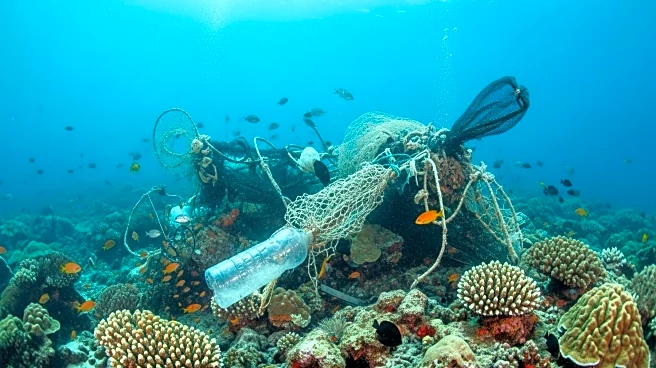What's Happening?
A recent study conducted by the Swedish University of Agricultural Sciences has highlighted the impact of pharmaceutical pollution on the behavior and migration of juvenile Atlantic salmon in Sweden's River Dal. The research focused on the effects of clobazam, a medication commonly prescribed for sleep disorders, and tramadol, an opioid painkiller. These substances, often found in environmental levels due to pharmaceutical waste, were shown to increase the migration success of salmon from river to sea. The study utilized slow-release pharmaceutical implants and animal-tracking transmitters to monitor the salmon's behavior as they navigated through hydropower dams, which are typically obstacles in their migration route.
Why It's Important?
The findings underscore the broader environmental implications of pharmaceutical pollution, which is an emerging global issue. With over 900 different substances detected in waterways worldwide, the presence of psychoactive substances like clobazam can significantly interfere with wildlife brain function and behavior. This study adds to the growing body of evidence that pharmaceutical pollutants can alter key life-history events in migratory fish, potentially affecting entire ecosystems. The research calls attention to the need for pharmaceutical companies to design drugs that break down more rapidly or become less harmful after use to mitigate environmental impacts.
What's Next?
The study suggests that further research is needed to fully understand the long-term ecological consequences of pharmaceutical pollution on aquatic life. Additionally, there may be increased pressure on pharmaceutical companies to develop more environmentally friendly products. Regulatory bodies might also consider implementing stricter guidelines for the disposal and treatment of pharmaceutical waste to prevent such pollutants from entering natural water systems.
Beyond the Headlines
The study highlights an ethical dimension, as it raises questions about the responsibility of pharmaceutical companies in preventing environmental harm. It also points to a potential cultural shift towards greater environmental accountability in the pharmaceutical industry, which could lead to innovations in drug design and waste management practices.












